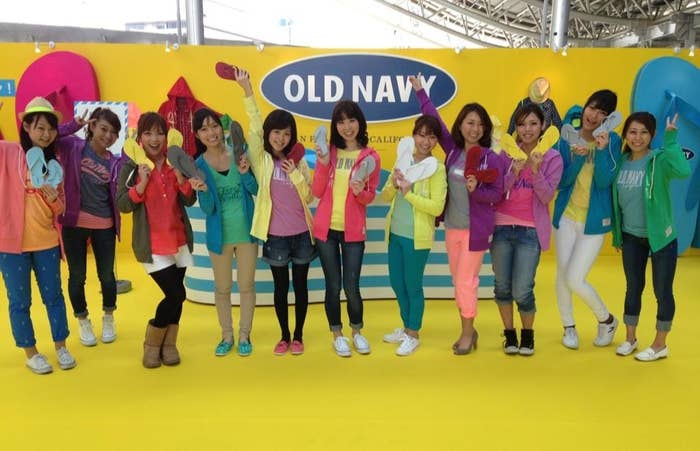
The aggressive expansion plans for Old Navy into Asia positions the bargain retailer as an anchor providing stability to parent company Gap Inc.'s business momentum.
Eighteen months into the turnaround engineered by Chief Executive Officer Glenn Murphy, who righted Gap's North American operations, the retailer has been looking overseas for ways to maintain its growth story. To be sure, Murphy said at a Goldman Sachs conference Tuesday that Old Navy's international opportunities and China, for all its brands, are key to Gap's future success.
With $6.1 billion in annual sales, Old Navy ranks as the biggest name in Gap's brand portfolio, which also includes the eponymous retailer, Banana Republic, Athleta, Piperlime and Intermix. (The company made $15.7 billion across all of the brands last year.) Both Gap and Banana Republic already have large presences overseas, but Murphy has been careful about rolling out Old Navy internationally.
"We purposely decided to keep Old Navy back until we had good visibility of the opportunity for us on a multi-brand perspective to win around the world," Murphy said at a Goldman Sachs conference on Sept. 10. "Once we had the proof points about Gap and Banana Republic, then we put Old Navy into the queue to go internationally."
The initial phase consisted of some test stores in Japan last year. After those proved successful, Old Navy decided to expand its operations in the country to between 18 to 20 stores this year. In addition, last week the company announced that it would open Old Navy stores in the Philippines beginning in 2014, adding to plans to build more locations in China.
"We're only 19 years old, we're quite young with respect to global brands, and we're of significant revenue size," Sonia Syngal, senior vice president of Old Navy International, said in an interview with BuzzFeed.

The family-oriented cultures in Asia dovetail with Old Navy's affordable family apparel position in the marketplace, especially when combined with steady economic growth and an expanding middle class. The brand is considered aspirational in the Philippines, where household income is about one-fifth the average amount in the U.S., Syngal said.
The family aspect also taps into the idea of shopping as family entertainment and sets Old Navy apart from Uniqlo, an "important competitor" in the region, H&M, and American brands opening stores internationally such as American Eagle and Aeropostale, Syngal said.
"If you observe our customers where we've deployed stores in Asia, we certainly see family shopping and a lot of energy across the families visiting our stores, and we don't see that as much in the competitive set," she said, adding that Old Navy stores include a slew of activities for children. "We put a lot of emphasis on the store experience, as much as on the product."
Though the expansion into Asia will primarily consist of brick-and-mortar stores, Syngal was quick to point out that e-commerce is also growing in "places you might not expect" in the region, as consumers increasingly gain Internet access via mobile phones by skipping desktop and laptop computers.
"One of Gap Inc.'s main business goals is to have its share of online and international revenue to be 30% by the end of this year," she said. "As the largest brand in the U.S. market for the company, we have a big role to play there."
